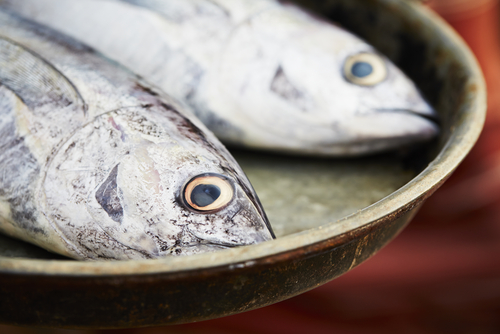Fish ‘silage’ for African animal feed

Fish offal can be made suitable as animal and aquafeed, by using the traditional silage technique. A three year Dutch project, led by IMARES Wageningen UR is exploring this in further detail.
In many African countries there is a severe shortage of animal protein (including for livestock and fish). Also, there is a need for the efficient use of protein sources. Industrial fish processing or small-scale fisheries in many countries produce by-products. These products are fine to use as a source of animal protein. The well-known preservation method ‘silage making’ can be the answer to re-use this waste.
By products often not efficiently re-used
A common problem in the utilisation of waste products is that there is often no efficient, small and affordable way is to convert these valuable proteins into suitable animal feed, for livestock and fish. Fishmeal production is a well-known way to step up fish offal, but the production is expensive.
Tested for poultry and aquafeed
The preservation method silage making (by using acids) can be an option. The researchers want to look if they can optimize this technique for fish waste, so that fish can remain unrefrigerated for up to six months. A small scale fish silage plant wil be set up in Somalia to exploit the possibilities for tuna waste. Furthermore, the use of fish silage will be tested in animal feed for aquaculture and poultry in Kenya and Ethiopia.
Many partners involved
For this project, Wageningen UR is partnering with three institutes in East Africa (EIAR in Ethiopia, KALRO and KMFRI Kenya) Prozee Techno Services BV, GEA Westfalia Separator Netherlands BV, Habo Tuna Factory in Somalia, Wananchi Marine Products (Kenya) Ltd, Selko Feed Additives, led by Rain Bow Agro.











